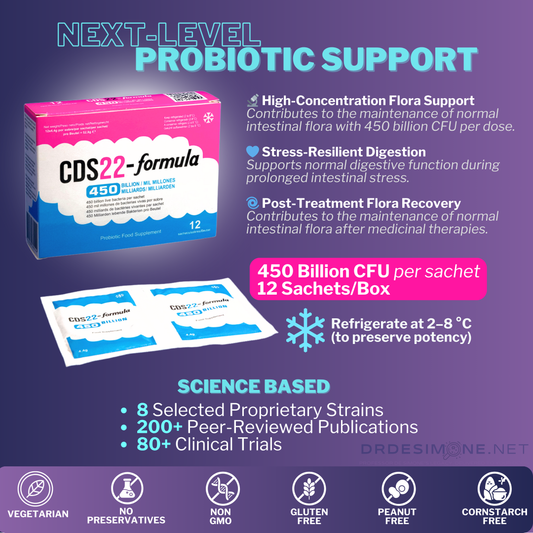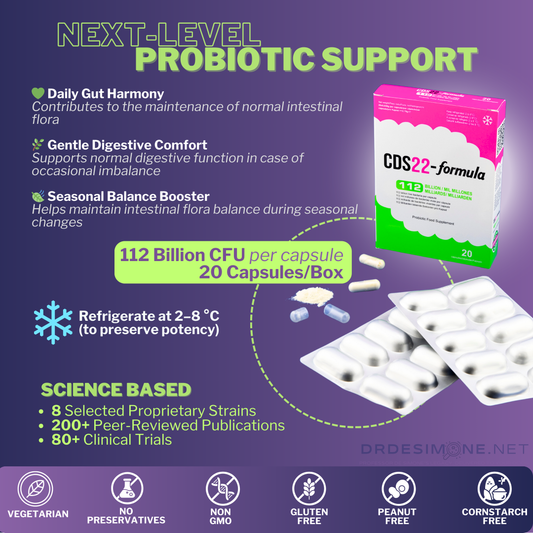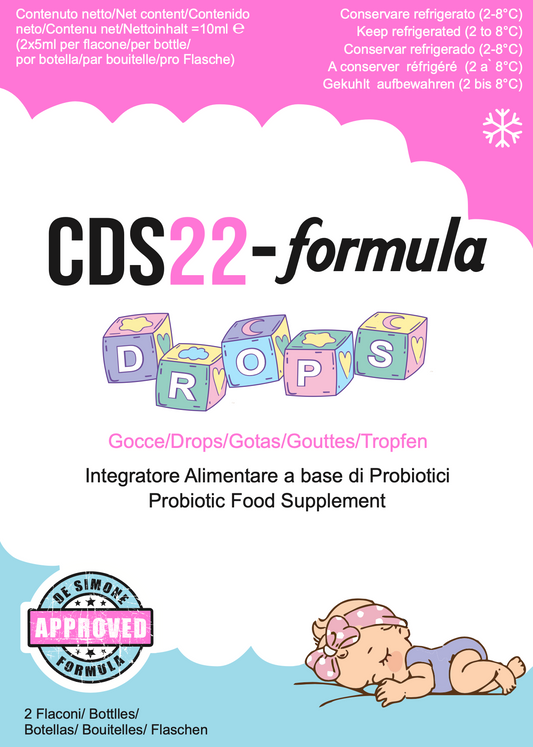
Microbiota, melatonin and newborn sleep: how they are connected
Share
This article is also available in:
🇮🇹 Italiano · 🇫🇷 Français · 🇩🇪 Deutsch · 🇪🇸 Español
Why do some newborns sleep peacefully, while others struggle with restless nights? Science suggests that part of the answer lies in two hidden “clocks” inside the body: melatonin, the hormone that tells us when it’s time to rest, and the gut microbiota, the community of bacteria that shapes many of our biological rhythms.
In recent years, researchers have discovered that these two systems are more connected than we once thought. From the melatonin naturally present in breast milk, to the way intestinal bacteria influence the production of serotonin (a precursor of melatonin), the dialogue between gut and brain starts from the very first months of life — and may even explain why routines, light exposure and diet play such a crucial role in infant sleep.
In the first months of life, the newborn’s pineal gland has not yet established a stable circadian secretion of melatonin; synchronization matures over the following weeks (later in preterms). As a result, part of the baby’s melatonin comes from the outside: first from the mother via the placenta, then from breast milk, which contains more melatonin at night than during the day and peaks after midnight.¹²³
Practical insight: this explains why, in the early months, two external factors become crucial: on the one hand breast milk, which conveys chronobiological signals, and on the other environmental routines (dim light, regular timing), which are the main cues to gradually train the infant’s circadian rhythm.¹
Systematic reviews confirm that several components in human milk show a circadian oscillation—among them melatonin and tryptophan (a melatonin precursor).¹ Observational studies show that night milk contains more melatonin, with an acrophase around 03:00, and that colostrum and the milk of mothers of preterm infants may have higher concentrations.³
In parallel, associations have been described between breastfeeding and better sleep efficiency/fewer colic, plausibly also due to chronobiological signals (markers such as urinary 6-sulfatoxymelatonin, aMT6s).²
The gut contains special cells called enterochromaffin cells. These cells act like small “chemical factories”: they produce most of the body’s serotonin and can also convert it into melatonin, the hormone that regulates sleep. In fact, over 90% of the serotonin we use every day does not come from the brain but from the gut, and the melatonin concentration in the digestive tract can be even higher than that found in blood.
This means there is a real direct line between gut and sleep: when the gut works well and the microbiota is in balance, the production of these “rest-friendly” substances works better.
Microbiota → metabolites → serotonin → melatonin
The bacteria living in our intestines produce substances called short-chain fatty acids (SCFA). These SCFA act as messengers: they stimulate enterochromaffin cells to produce more serotonin. Since serotonin is the starting point for melatonin synthesis, this mechanism creates conditions for greater local melatonin availability in the gut.⁴ At the same time, the microbiota and its metabolites have diurnal rhythms influenced mainly by feeding/fasting, in a two-way dialogue with our body clocks.⁸
In short: mealtime routines and microbiota quality are not minor details—they “speak” to the child’s clock.
The development of the microbiota in the first 1,000 days drives immune maturation and long-term programming. A microbiota that matures harmoniously (birth, breastfeeding, food introduction, limited use of drugs unless strictly necessary) is associated with better immune outcomes and potentially more stable rhythms.⁹
Goal: send coherent signals to the circadian system and to the microbiota.
- Light and dark: dim lights 60–90 minutes before the evening feed; avoid cool/blue lights during night feeds.² Red lights are preferable.
- Chrononutrition of expressed milk: if you use expressed breast milk, match (as far as possible) “night” milk to night feeds and “daytime” milk to daytime feeds.¹¹
- Predictable meals: relatively regular timing supports the microbiota and peripheral clocks; avoid constant evening nibbling.⁸
- Sleep environment: consistent; repetitive routine (lukewarm bath, soft voice, skin-to-skin).
- Empathy for mothers (and fathers): colic and rough nights are no one’s “fault”; sleep biology is built over time.
- Note on infant formulas: standard formulas do not contain endogenous melatonin like breast milk. Some experimental studies have tried to enrich formulas with nutritional mixes or precursors (e.g., tryptophan) and observed interesting effects on sleep–wake rhythms, but these interventions do not reproduce the complexity and natural variability of human milk.³²
✨ We’ve prepared a short Goodnight Tips guide with practical routines and ideas to support your baby’s sleep. Just sign up through the form at the link below, and you’ll receive it directly in your inbox — for free.
Download the freebie

Drops containing strains documented in pediatrics can be an indirect tool: they do not “put the baby to sleep”, but they support the intestinal ecosystem. A healthy gut produces substances (SCFA) and regulates the availability of tryptophan and serotonin, which underpin melatonin synthesis at the intestinal level. In this way, probiotics can indirectly support the proper functioning of the child’s biological rhythms, as confirmed by several scientific studies.⁴⁵⁸ (Always talk to your pediatrician, especially if the baby is preterm or has ongoing conditions.)
When does the newborn’s melatonin production begin?
Endogenous melatonin secretion by the pineal gland typically starts to appear between the 2nd and 3rd month of life, a little later in preterm babies. In the meantime, breast milk is an important external signal.²¹⁴
Does it make sense to breastfeed at night in the dark?
Yes. Using dim or red light at night aligns with the natural increase of melatonin in breast milk and helps convey to the infant the biological “night” signal.
Does the microbiota really follow a rhythm?
Yes. Intestinal bacteria and their metabolites (such as SCFA and bile acids) show daily fluctuations and communicate bidirectionally with our body clocks.⁸
References
- Italianer MF et al. Circadian Variation in Human Milk Composition, a Systematic Review. Nutrients. 2020;12(8):2328. PMID: 32759654.
- Häusler S et al. Melatonin in Human Breast Milk and Its Potential Role in Circadian Entrainment: A Nod towards Chrononutrition? Nutrients. 2024. PMID: 38794660.
- Qin Y et al. Variations in melatonin levels in preterm and term human breast milk during the first month after delivery. Scientific Reports. 2019;9:17984. PMID: 31784629.
- Reigstad CS et al. Gut microbes promote colonic serotonin production through an effect of short-chain fatty acids on enterochromaffin cells. FASEB J. 2015;29(4):1395–1403. PMID: 25550456.
- Rezzani R et al. A Focus on Enterochromaffin Cells among the Enteroendocrine Cells: Localization, Morphology, and Role. Int J Mol Sci. 2022;23(7):3758. PMID: 35409109.
- Bubenik GA. Thirty four years since the discovery of gastrointestinal melatonin: is it still a mystery? J Physiol Pharmacol. 2008;59 Suppl 2:33–52. PMID: 18812627.
- Silva YP et al. The Role of Short-Chain Fatty Acids From Gut Microbiota in Gut–Brain Communication. Front Endocrinol (Lausanne). 2020;11:25. PMID: 32116519.
- Zimmermann P et al. Microbial melatonin metabolism in the human intestine as a therapeutic target for dysbiosis and rhythm disorders. npj Biofilms and Microbiomes. 2024;10:139. doi:10.1038/s41522-024-00605-6.
- Pantazi AC et al. Development of Gut Microbiota in the First 1000 Days after Birth and Potential Interventions. Nutrients. 2023;15(16):3647. PMID: 37630837.
- Caba-Flores MD et al. Breast Milk and the Importance of Chrononutrition. Front Nutr. 2022;9:867507. PMID: 35573335.
- Hahn-Holbrook J et al. Human milk as “chrononutrition”: implications for child health and development. Pediatr Res. 2019;85:936–942. PMID: 30872872.
- Biran V et al. Melatonin Levels in Preterm and Term Infants and Their Mothers. Int J Mol Sci. 2019;20(9):2077. PMID: 31035622.







